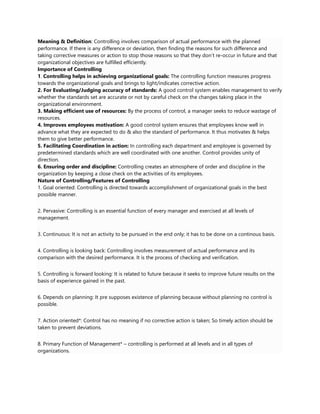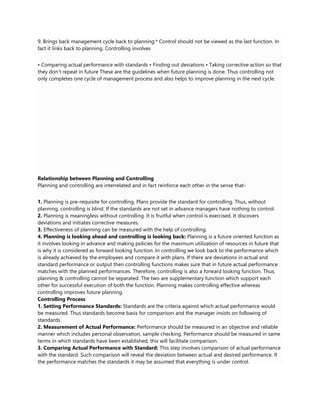Controlling involves comparing actual performance to planned performance and taking corrective actions to address any deviations. It is an important management function that helps achieve organizational goals, evaluate standards, improve efficiency, motivate employees, ensure coordination and order. The controlling process involves setting performance standards, measuring actual performance, comparing to standards, analyzing deviations, and taking corrective actions. Controlling is goal-oriented, pervasive, continuous and both looks back at past performance and forward to improve future results. It is interconnected with and reinforces the planning process.


